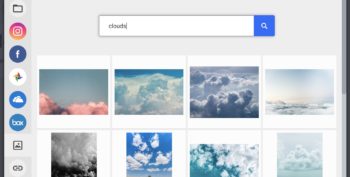Email Marketing
3 Tips to Improve Your Email Newsletter Contact List
Jun 4, 2015
Did you know your email newsletter contact list expires at a rate of 25% per year?
Your organization will lose their ability to reach 1 in 4 of your contacts over the next 12 months, according to HubSpot. The most common reasons can include switching jobs, overly full inboxes, and abandonment of full email accounts.
There is risk to your email marketing success rates in having an email list that’s not correctly “scrubbed” to include only updated contacts. You may suffer from inaccurately low metrics like open rate or click-throughs.
More seriously, a high bounce rate can affect your sender score, which is a measure of your credibility to spam algorithms.
How to Improve Your Email Newsletter Contact List
The most effective marketers don’t just focus on the quantity of contacts. They also pay attention to quality. The following actions can yield better results:.
1. Clean Your List
The absolute most important thing you can do to improve list quality is clean on a regular basis. Never go longer than six months without cleaning, though some deliverability experts recommend bi-monthly or more frequently if you’re experiencing a high volume of bounces.
Most email marketing platforms support easy exports of contacts via .CSV file. Gmail users can export contacts through a FlashIssue account. Upload the list to a service like DataValidation.com, and re-import the resulting clean list.
For a full tutorial, check out FlashIssue’s resource here.
2. List Segmentation
Your prospects want personalized, relevant emails. They don’t want mass communications. Segmenting your email newsletter list according to demographics, firmographics, and other factors can improve open rates and click-throughs.
While your options for segmentation are nearly unlimited, the following modes drive outstanding results:
- Contact status (Lead, Customer, Loyal Customer)
- Geography
- Age and Gender
- Organization, Organization Size, Industry, Job Title
Simple actions, like building list segments in your Gmail with Google Contact Books, can make an enormous difference.
3. Work Towards High Subscriber Engagement
Subscriber engagement is becoming an increasingly critical part of your sender score. If your prospects aren’t opening or clicking on your messages, you may be raise the suspicion and damage deliverability to specific domains (such as Yahoo or MSN). After each send or as often as possible, we recommend that you:
- Monitor for Deliverability Patterns – are you experiencing extremely low engagement or high bounces to certain domains? You may need to delete these email addresses.
- Check for Incorrect Emails – in between scheduled email list cleanings, check for email addresses with obvious misspellings, such as a “2” in the place of an “a” symbol.
- Delete Role Addresses – Emails like “admin@yourdomain;” “accounting” or frontdesk” likely have minimal engagement.
Engaging in regular list scrubs, segmentation, and deleting poorly-engaged contacts isn’t just a best practice for better metrics. It’s a crucial action to take to protect your company’s deliverability in the future.
Continue reading


